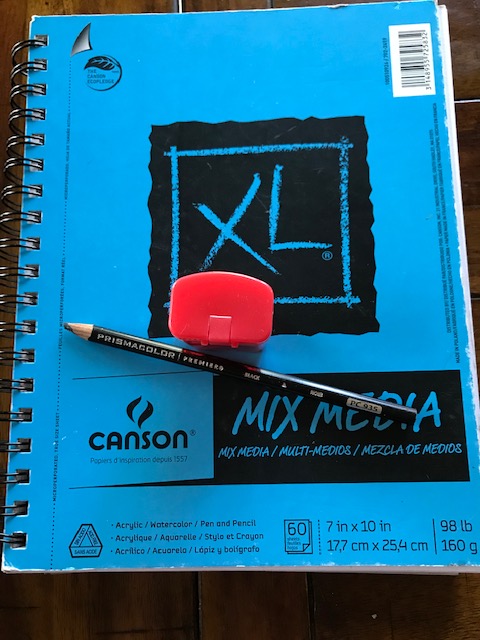
Enjoy these spring green nature journal ideas! The spring world just begs to be sketched – capturing the various shades of green.

The colors of the flowers as they blossom in the warming sun just cry out to us to observe them closer, to see their intricate details. As I gather a few of our early spring flowers to record in my nature journal, I am struck the with the varying shades of green that appear in the leaves of these springtime beauties.
Spring Green Nature Journal Ideas
Each stem and leaf is a different shade of green, or they are even a mixture of greens that need our careful scrutiny if we are going to get them just right in our journal. Some leaves are olive green, some are emerald green, and some are dark green. I invite you to look at your garden greens and see if you don’t notice it too.
I count myself a very careful observer of nature. I spend lots of time in my garden enjoying the many varieties of plants, bushes, and trees, but I didn’t even notice the reddish edges on this leaf until I brought it inside to sketch into my nature journal. This illustrates the value of slowing down and taking the time to keep a nature journal…you are blessed with better powers of observation.
This is true in adults and also in children. We can help train our children to have better observation skills in all areas of their life if we use nature journaling as a skill-building tool.
Out of sheer self-indulgence I decided to make a couple pages in my journal with all the different greens I have in my colored pencil collection. I made small little sample splotches of color for each of the greens in my watercolor pencil and regular colored pencil sets. I labeled each color patch with the name on the pencil or in some cases the number on the pencil. This way I can use it as a reference whenever I need to find just the right green for a sketch. The color palette of spring is very different than that of autumn or winter.
Spring Nature Study In Your Homeschool
Now I am ready to make some nature journal entries! You may wish to include this nature journal idea as part of your Spring Wildflowers study.

More Nature Ideas for Your Homeschool
Let these give you even more nature journal ideas!
Easy Preschool Science Nature Journals – My daughters have their own paper bag nature journal. The inside pages have a place where they can draw what they have observed on our nature walk. This is a perfect nature craft for kids!
The Ultimate Guide to Nature Journaling: Tips for Writing About Nature – We’ve gathered the best tips for writing about nature in this ultimate guide to nature journaling. What a wonderful, joyful way to expand your homeschool nature study!
Creating a Nature Journal Supply Kit for Your Homeschool – It is simple, inexpensive and is easy to do!

Nature Study Calendar included in Membership!
For even more homeschool nature study ideas, join us in Homeschool Nature Study membership! You’ll receive new ideas each and every week that require little or no prep – all bringing the Handbook of Nature Study to life in your homeschool!
Be inspired. Be encouraged. Get Outdoors!
First published April 2012 by Barb, updated by Tricia March 2025















































